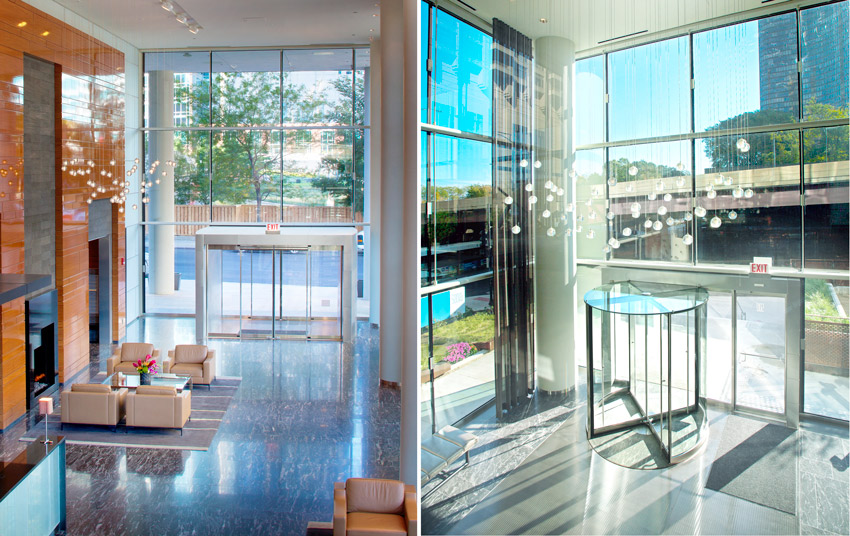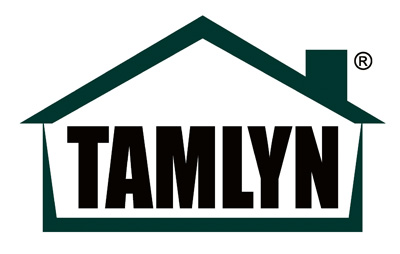Multifamily Market Design Methodologies
Entrance Access and Control
Safety and security are fundamental aspects of any building, but they are particularly notable in multifamily housing situations where a lot of people can be coming and going. This is especially true in multiuse buildings with multiple occupancies and different types of tenants. Of course, residents wants to be able to freely access their building and living units, but they also want to be sure that access is controlled when it comes to nonresidents or unwanted intruders. The means to address these access and security controls usually get translated into door and access hardware and systems. Some systems rely on conventional, physical barriers and locks, but increasingly, a reliance on electronic controls of those physical barriers is becoming common. As a result, the range of hardware and access control systems used in a multifamily facility can be multifaceted and take on a variety of types and forms. We will look at some of the common ones here as follows.
- Entrance systems: Most multifamily buildings, particularly in urban locations, have common doors or entrances where residents, guests, vendors, and others enter and exit the building, often into a shared common space. There may or may not be a person there to monitor the people entering and leaving, but there will certainly be a door of some type with the ability to control its opening and closing. In some cases, that can be a revolving door for better control of conditioned air escaping to the exterior, or it can mean automatically operated doors for the convenience of the users. Whatever the type or location, the entrance system needs to have the flexibility to suit the project needs, the security capability to withstand unwanted entry, and the ability for control of its operation.
- Exterior space access: Many multifamily developments pride themselves on the outdoor public space amenities that they provide, such as swimming pools, eating areas, recreation spaces, and even garden plots. Those spaces are intended for the exclusive use of residents and guests so providing appropriate forms of physical access control is desired or even mandated by local circumstances. Full-height turnstiles located within a fencing or other barrier system are one option that is effective and common. In the locked position, it restricts entry to those not authorized to be there, while the use of proper credentialed controls allows residents the ability to freely access the spaces.
- Interior separations: Some buildings have common areas that are more public than others. A public lobby or entry space may have different security needs than a nearby semi-private gathering space for residents. Separating the two may be called for, but visibility may also be desirable. In those cases, providing interior glass partitions or even horizontal sliding glass walls can provide the flexibility yet separation that is being sought after. These types of operable panel systems, whether manual or automatic, can reduce pathway obstacles, increase transparency, reclaim occupied square footage, and create reconfigurable spaces.
- Conventional and electronic hardware: Once all of the entrance, access, and separation systems are identified, then attention can turn to the types of hardware that are appropriate for each. All will have a physical component in the form of locks, handles, latches, etc. If they are intended to utilize electronically interfaced components, then those need to be assessed based on the existing and emerging options and the particular needs of the multifamily project. Some of the options might include electronically interfaced hardware with discreet programmable functions for tiered control for residents, managers, and security/ maintenance personnel. There are also evolved card, wireless, and Bluetooth technologies that can provide a multitude of control options using software apps downloaded onto smart phones or similar devices. And, because multifamily projects can vary greatly in size and number of users, there are scalable solutions that recognize, translate, and integrate with many different software platforms to suit particular project and user needs.
The key to success in designing and specifying entrance and access control systems is to collaborate with manufacturers or suppliers of systems who can provide technical assistance. In this manner a comprehensive and coordinated approach can be formulated that integrates the whole package of physical entrance items, hardware, and electronic interface where desired. In this way, the many and diverse technologies available can be integrated into a singular manageable access control system.

Photos courtesy of dormakaba
Access control for safety and security in multifamily buildings can take on different forms, including individual unit locking systems, electronic and smart phone access, and outdoor full-height turnstile systems, all as shown here.
Conclusion
Multifamily housing remains a big part of the construction market even though it experiences some ebbs and flows in production and some regional variations. Building owners and residents continue to require quality and even luxury features but at a reasonable cost. Architects and other design team members who can identify the best ways to provide such amenities while controlling costs, including some of the techniques discussed in this course, increase the likelihood for successful projects and repeat work with building owners or developers.
Peter J. Arsenault, FAIA, NCARB, LEED AP, is a nationally known architect, consultant, continuing education presenter, and prolific author advancing building performance through better design. www.pjaarch.com, www.linkedin.com/in/pjaarch

|
|
Notice

www.dormakaba.us

www.newmill.com

www.tamlyn.com

InsulateYourBuild.com












